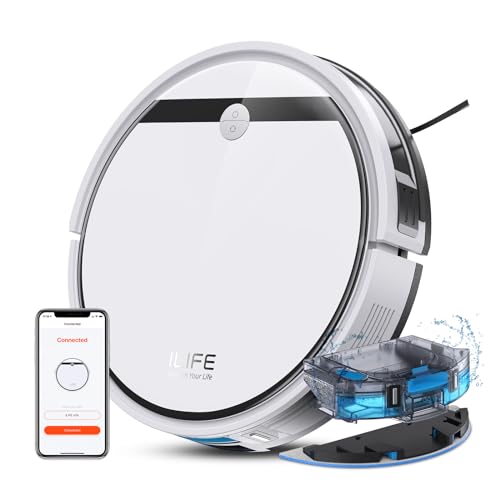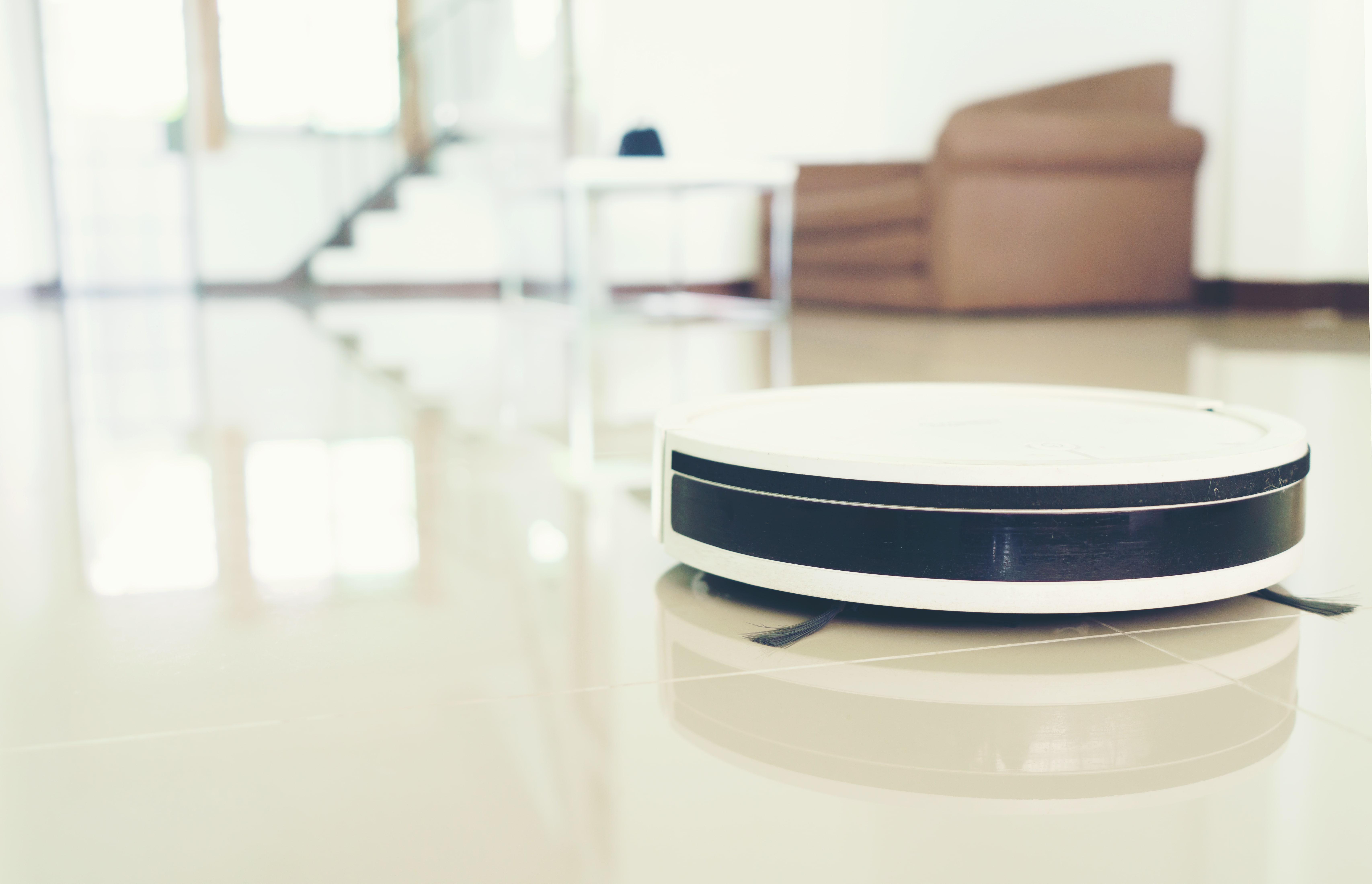How to Take Care of a Robot Mop and Vacuum
 A robot vacuum and mop can save you much time in cleaning. They also require regular maintenance, such as emptying the dustbins, cleaning the reusable cleaning pads in conformity with the manufacturer’s guidelines or removing the disposable ones and keeping the sensors clean.
A robot vacuum and mop can save you much time in cleaning. They also require regular maintenance, such as emptying the dustbins, cleaning the reusable cleaning pads in conformity with the manufacturer’s guidelines or removing the disposable ones and keeping the sensors clean.
 App integration allows you to set power and schedules, as well as save maps and adjust settings.
App integration allows you to set power and schedules, as well as save maps and adjust settings.
1. Empty the Dirt Bin
The majority of robot vacuum cleaners require regular maintenance, which entails emptying dirt bins, washing pads, and keeping track of replacement consumables. The more you take care of these components, the longer your robot mop and vacuum will last. Certain cleaning robots require some extra care particularly those with water tanks.
First, ensure that the dustbin is empty after every cleaning session. This is among the simplest tasks you can complete, yet it is vital to the efficiency of your robot. It is also recommended to keep the filter clean regularly. Refer to the user’s manual to determine how and when you should clean your filters.
Although the mopping feature on your robot can remove many dust particles but a few tiny particles will still be accumulating in the cracks and gaps of your flooring. These include hair and skin particles such as mites, dandruff, dirt, sand and pet hair. To keep these particles from causing health issues, it is important to make use of the vacuum cleaner or sweep robots to clear these areas.
Additionally, if you plan on using your mopping robot it is important to select a model that has top-notch hardware and spacious water and dust tanks. LEGEE, for example, has one of the largest dust bins and water tanks in its class, which means you won’t need to stop cleaning or interrupt your robotic mop to refill the tank.
Do not put vinegar or floor cleaners into the water tank of your robot mop, unless you have been instructed to do this by its manufacturer. These substances could damage the robot and may cause the warranty to be voided.
A robot mop and vacuum is the perfect method to make your life easier so that you can concentrate on other priorities like your family or work. However, some stains and dirt are too difficult for your robot to handle. You should also periodically use a traditional vacuum to clean areas your robot isn’t able to reach.
2. Clean the Cleaning Pads
Depending on the method you make use of your robot mop, the pads can be stained or dirty. This is why it’s crucial to clean the pads for cleaning regularly. This can be accomplished by throwing them in the washing machine along with the regular washing of laundry, or hand-washing them. Avoid using fabric softeners and dryer sheets because they reduce the absorbency and cause the pad to stop working properly.
If your robot mop doubles as an air cleaner, it will require its dust bin to be emptied and cleaned on a regular basis. The same is true for hybrid models that sweep and vacuum with dry mop pads. Many robot mops come with brush attachments that require to be washed.
It is important to rinse the mop pads thoroughly to remove any dirt and grime. You can also soak them in warm water for a few minutes to loosen any debris that’s stuck. When they’re completely clean, let the pads air dry or put them in the dryer on the lowest setting. It is recommended that you wash your pads every 2 to 3 months.
During the cleaning cycle a vacuum or mop can pick up small items that could damage your robot’s sensors. You can prevent this by wiping your sensors clean with a microfiber cloth every now and again. This will assist the robot navigate around the space without hitting furniture or walls.
Sensors at the bottom of the majority of robot vacuums and Cleaning Robots mop are used to detect obstacles, making sure that the machine won’t get stuck in tight spaces. It is necessary to clean them frequently since they can become clogged up with dust and other debris.
Some robot vacuums have a self-cleaning feature that you can utilize after every use. You can check the site of the manufacturer to find out whether this feature is present on your model. This process can take two to three minutes and can be controlled via an app or a button on the robot. A cleaning robot vacuum and mop must be running this cycle on a regular basis to help maintain the performance of its sensors and other components.
3. Clean the Charging Station
The majority of robot mop cleaners spray water or cleaning solution directly onto the floor to soften stains. They then scrub them with a scrub pad. Some use disposable mop pads as well as others that are designed to be cleaned and reused. Whether you choose disposable or reusable mop pads it’s important to empty and wash them between cleaning sessions according to the instructions of the manufacturer. It’s recommended to drain the mop base or docking station dry between use, too, to prevent mildew from developing.
Like vacuum cleaners, robot mops and vacuum/mop combos require regular maintenance to keep running smoothly. This includes emptying the dust bin, washing the pads and occasionally cleaning the sensors. If you own a robotic mop that’s equipped with sensors for dirt it is possible to wipe it clean every several cycles to remove dirt that could cause obstruction to the sensors and cause errors in navigation.
Many robot mop models come with a smart app that allows you to save maps of your home, set cleaning schedules and even monitor the time when the machine requires maintenance. If you plan on purchasing mop, make sure you choose one that connects to your Wi-Fi so you can use the app to control it from anywhere.
The Samsung Powerbot Vac + Mop is a top-rated model that includes smart features that help it clean the floors without you being home. Its map function enables you to create virtual barriers and no-go zones for the robot and also manually guide it to clean a particular part of the room. Its mopping and vacuuming capabilities are able to work on carpeting and hard floors, which makes it an ideal option for homes with both.
This robot is also equipped with an intelligent object avoidance sensor that helps it navigate around objects such as furniture. It also has self-emptying bins that reduce the amount that must be cleaned after each use. It is also programmable to run even when you’re not which is ideal for busy homeowners. It is also quieter than other vacuums. This is great for people who have children or pets who are sensitive to noise.
4. Clean the Sensors
The majority of robot vacuums as well as mop-and-vacuum models come with an app that lets you set up automated cleaning schedules, set cleaning modes and monitor when the device requires maintenance. The app allows you to manually clean start, stop and alter the settings of your robot from any place in the house.
The app is particularly useful if the robotic cleaner is equipped with mapping capabilities, like cameras, lasers or optical dToF. This allows it to save the map of the room, and move around furniture. These features can also reduce the number of stains that recur on your floor, which makes your cleaning chores less labor intensive.
If the sensors that map your robot’s location get dirty, it might have difficulty navigating your home. It is important to clean these sensors regularly like you would the lens of a camera or smartphone screen. The best robot hoover way to do this is using a dry, clean cloth. If you use a moist cloth or cleaner, you could harm the sensors and cause malfunction.
It’s also recommended to clean the brushes of your robot vacuum on a regular basis. This will help to prevent hair tangles and clogging of the motor. It will also make it easier for your robot vacuum to clean up debris. It’s also a good idea to clean your primary roller brush, since it is usually responsible for removing dirt and will build up a lot of dust over the course of time.
Lastly, be sure to only use the cleaners recommended by your robot’s manufacturer. Other floor cleaners could damage your robot and could void its warranty. Most brands recommend a mix of vinegar and water, or a cleaner that is formulated specifically for their robot. Never pour in hot water or use a solution containing abrasives since they can damage internal components and leave behind an unpleasant residue on your floors. If you have any concerns, consult your owner’s manual for specific instructions on how to clean your robot cleaner. This will ensure that it operates well and lasts for a longer time.
